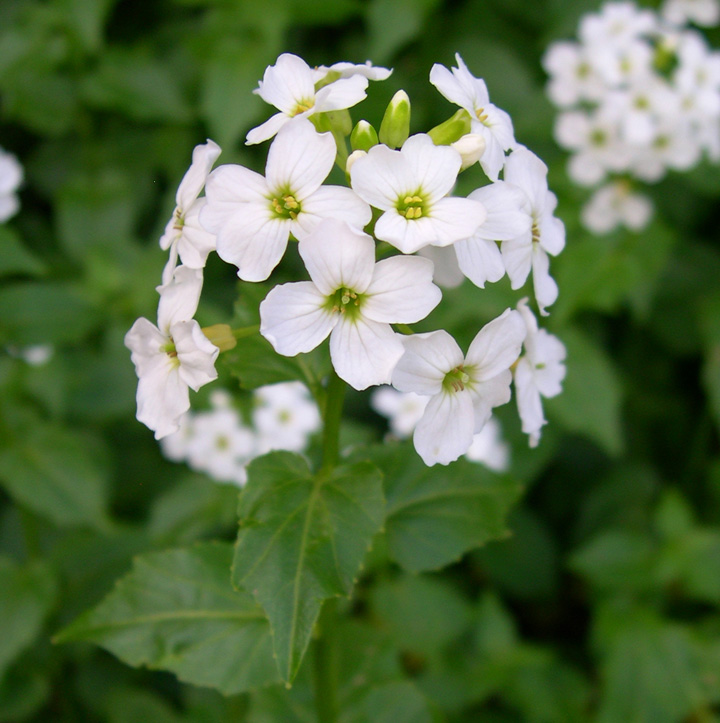|
Family: Brassicaceae |
Annuals, biennials, or perennials; (perennials usually rhizomatous, sometimes tuberiform, stolons present in C. flagellifera, caudex present in C. bellidifolia); not scapose (subscapose in C. bellidifolia); glabrous or pubescent. Stems erect, ascending, decumbent, or prostrate, unbranched or branched. Leaves: cauline, rhizomal, or basal; rhizomal and basal rosulate or not, petiolate, blade margins entire, toothed, or 1-3-pinnatisect, or palmately lobed, sometimes trifoliolate, pinnately, palmately, or bipinnately compound (leaflets petiolulate, subsessile, or sessile); cauline (usually alternate, rarely opposite or whorled) petiolate or sessile, blade (base cuneate, attenuate, or auriculate to sagittate), margins entire, dentate, or variously lobed, (leaflets petiolulate or sessile). Racemes (corymbose or paniculate, bracteate in C. pattersonii), elongated in fruit. Fruiting pedicels erect, ascending, divaricate, or reflexed, slender or stout. Flowers: sepals (caducous), usually erect, rarely spreading or ascending, ovate or oblong, lateral pair saccate or not basally, (usually glabrous, rarely pubescent); petals (rarely absent), white, pink, purple, or lilac, obovate, spatulate, or oblanceolate, claw absent or strongly differentiated from blade, (apex obtuse, rounded, emarginate, or subemarginate); stamens (6, rarely 4), equal in length; filaments not dilated basally; anthers ovate, oblong, or linear, (apex obtuse), glabrous [rarely pubescent]; nectar glands confluent, lateral glands annular or semiannular, subtending bases of stamens, median glands present (2, rarely 4) or absent. Fruits siliques, sessile, usually linear, rarely narrowly oblong or narrowly lanceolate, smooth or torulose, latiseptate; valves (papery, elastically dehiscent, becoming spirally or circinately coiled) each not veined, glabrous or, rarely, pubescent; replum strongly flattened; septum complete, (membranous); ovules 4-80 per ovary; style usually distinct, rarely obsolete; stigma capitate. Seeds uniseriate, flattened, usually not winged, rarely margined or winged, oblong, ovoid, or globose; seed coat (smooth, minutely reticulate, colliculate, or rugose) mucilaginous or not when wetted; cotyledons accumbent, rarely incumbent. x = 7, 8. Sep erect, obtuse; pet white to pink or purple, or rarely none; stamens in some spp. fewer than 6; short stamens subtended by a semicircular gland; anthers oblong; ovary cylindric, gradually tapering to the short, slender style; stigma truncate or nearly so; fr linear, terete or quadrangular, straight, many-seeded, tipped with the persistent style, which in the Dentaria group commonly forms an evident, slender beak 6-8 mm; persistent frame of the replum relatively broad or slightly wing-margined; seeds in a single row in each locule, flattened, wingless; annual to perennial herbs with simple to pinnately or palmately compound or trifid (even biternate) lvs; pubescence none or of simple hairs. 200, cosmop. (Dentaria) Gleason, Henry A. & Cronquist, Arthur J. 1991. Manual of vascular plants of northeastern United States and adjacent Canada. lxxv + 910 pp. ©The New York Botanical Garden. All rights reserved. Used by permission. |


